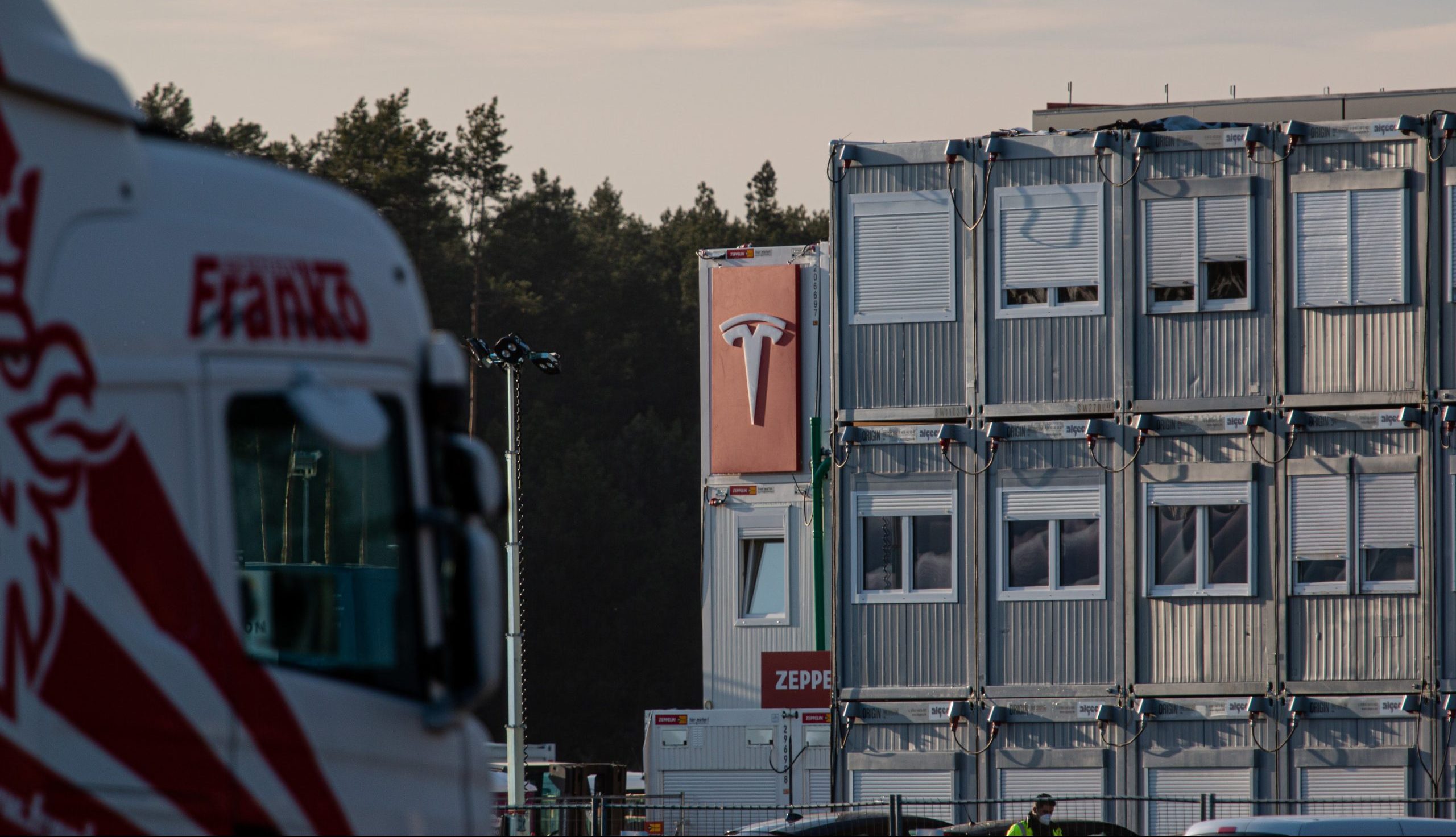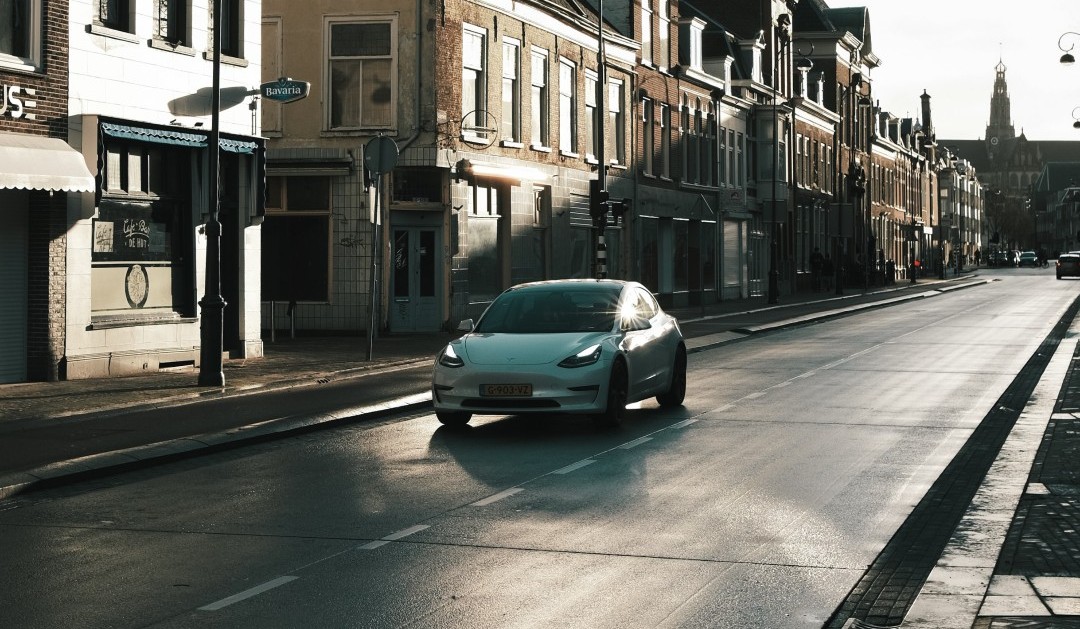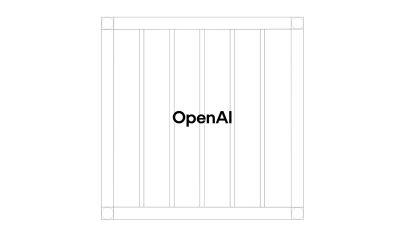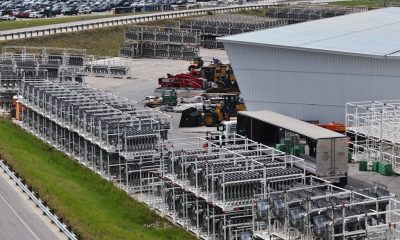Tesla has the makings of a controversial stock. It’s a company with products that are loved by its users and hated by its skeptics, and it’s led by a man that’s both admired by his supporters and loathed by his critics. It was then no surprise when Tesla became one of the most-shorted companies in the market. But amidst Tesla’s rise last year and the release of its Q1 2021 vehicle production and delivery report, it appears that TSLA bears, or at least a good number of them, are starting to go extinct.
A good overview of how a company is perceived could be found in the overall stance of analysts covering the stock. Among the 41 analysts covering TSLA today, 15 have a “Buy” rating, 14 maintain a “Hold” rating, and 12 have a “Sell” rating, as per data from Bloomberg. This suggests that Tesla remains quite polarizing, as Buy ratings typically outnumber Sell ratings 10-to-1 for stocks in the Dow Jones Industrial Average.
Tesla (TSLA) sets new records with with 184k vehicle deliveries in Q1 2021
The same is true for TSLA’s price targets. Tesla’s bull-bear spread between its highest price target ($1,036) and its lowest ($135) stands at $901, or about 133% of the current $661.75 stock price. In the Dow Jones Industrial Average, the average bull-bear spread for stocks is less than 50%. While Tesla has maintained its polarizing nature in the market, however, there is one metric that suggests that a TSLA bear exodus is taking place.
There was a time not too long ago when Tesla’s short-interest ratio was about 25%, which meant that one in every four shares was borrowed and sold by investors betting on the company to fail. Such a short-interest ratio was insane, as the average for stocks in the S&P 500 is just about 3%. Today, this ratio stands at just about 6%, which is still higher than average but significantly lower than its figures three years ago.
As noted in a Barron’s report, there is an important mitigating factor in Tesla’s short-interest ratio, in the form of hundreds of millions in convertible bonds outstanding, most of which were issued long ago and are capable of being converted into TSLA stock at around $65 per share. Considering that Tesla stock is worth more than 10x that amount today, the convertible bonds have rallied over 500% over the past year.

While this is great for convertible bond holders, numerous bond investors are actually not interested in Tesla stock. Instead, some are convertible arbitrage investors, who buy convertible bonds and short the underlying stock. This way, the arbitrage trader is able to lock in a notable bond yield. S3 Partners managing director of predictive analytics Ihor Dusaniwsky has noted that the bonds are “mostly held by hedge funds.” He also estimates that about half of Tesla’s current short interest might be part of a convertible arbitrage strategy.
If the S3 Partners’ executive’s estimates are accurate, it would suggest that about 22 million Tesla shares are sold short, or about 2.9% of TSLA stock. This number is substantial, but it is small compared to the 200 million TSLA shares sold short back in 2019. This does not mean to say that Tesla bears have entirely given up, of course, as some will likely remain with their short position for a long time to come. However, the declining number of TSLA shares that are sold short does suggest that bears, or at least a good number of them, may be throwing in the towel.
Former Goldman Sachs Asset Management CIO Gary Black has noted that the declining number of TSLA bears may be due to the fact that some critical bearish arguments against Tesla are being soundly debunked. One of these is the notion that Tesla’s share of the EV market will get drastically smaller as soon as other automakers enter the electric car segment. Despite the noise by proponents of this thesis, the opposite has been true, as more and more car buyers tend to leave gas-powered vehicles–not other electric cars like Tesla–when they purchase EVs made by other automakers.
Disclaimer: I am long TSLA
Don’t hesitate to contact us for news tips. Just send a message to tips@teslarati.com to give us a heads up.
News
These Tesla, X, and xAI engineers were just poached by OpenAI
The news is the latest in an ongoing feud between Elon Musk and the Sam Altman-run firm OpenAI.

OpenAI, the xAI competitor for which Elon Musk previously served as a boardmember and helped to co-found, has reportedly poached high-level engineers from Tesla, along with others from xAI, X, and still others.
On Tuesday, Wired reported that OpenAI hired four high-level engineers from Tesla, xAI, and X, as seen in an internal Slack message sent by co-founder Greg Brockman. The engineers include Tesla Vice President of Software Engineering David Lau, X and xAI’s head of infrastructure engineering Uday Ruddarraju, and fellow xAI infrastructure engineer Mike Dalton. The hiring spree also included Angela Fan, an AI researcher from Meta.
“We’re excited to welcome these new members to our scaling team,” said Hannah Wong, an OpenAI spokesperson. “Our approach is to continue building and bringing together world-class infrastructure, research, and product teams to accelerate our mission and deliver the benefits of AI to hundreds of millions of people.”
Lau has been in his position as Tesla’s VP of Software Engineering since 2017, after previously working for the company’s firmware, platforms, and system integration divisions.
“It has become incredibly clear to me that accelerating progress towards safe, well-aligned artificial general intelligence is the most rewarding mission I could imagine for the next chapter of my career,” Lau said in a statement to Wired.
🚨Optimistic projections point to xAI possibly attaining profitability by 2027, according to Bloomberg's sources.
If accurate, this would be quite a feat for xAI. OpenAI, its biggest rival, is still looking at 2029 as the year it could become cash flow positive.💰 https://t.co/pE5Z9daez8
— TESLARATI (@Teslarati) June 18, 2025
READ MORE ON OPENAI: Elon Musk’s OpenAI lawsuit clears hurdle as trial looms
At xAI, Ruddarraju and Dalton both played a large role in developing the Colossus supercomputer, which is comprised of over 200,000 GPUs. One of the major ongoing projects at OpenAI is the company’s Stargate program,
“Infrastructure is where research meets reality, and OpenAI has already demonstrated this successfully,” Ruddarraju told Wired in another statement. “Stargate, in particular, is an infrastructure moonshot that perfectly matches the ambitious, systems-level challenges I love taking on.”
Elon Musk is currently in the process of suing OpenAI for shifting toward a for-profit model, as well as for accepting an investment of billions of dollars from Microsoft. OpenAI retaliated with a counterlawsuit, in which it alleges that Musk is interfering with the company’s business and engaging in unfair competition practices.
Elon Musk confirms Grok 4 launch on July 9 with livestream event
News
SpaceX share sale expected to back $400 billion valuation
The new SpaceX valuation would represent yet another record-high as far as privately-held companies in the U.S. go.

A new report this week suggests that Elon Musk-led rocket company SpaceX is considering an insider share sale that would value the company at $400 billion.
SpaceX is set to launch a primary fundraising round and sell a small number of new shares to investors, according to the report from Bloomberg, which cited people familiar with the matter who asked to remain anonymous due to the information not yet being public. Additionally, the company would sell shares from employees and early investors in a follow-up round, while the primary round would determine the price for the secondary round.
The valuation would represent the largest in history from a privately-owned company in the U.S., surpassing SpaceX’s previous record of $350 billion after a share buyback in December. Rivaling company valuations include ByteDance, the parent company of TikTok, as well as OpenAI.
Bloomberg went on to say that a SpaceX representative didn’t respond to a request for comment at the time of publishing. The publication also notes that the details of such a deal could still change, especially depending on interest from the insider sellers and share buyers.
Axiom’s Ax-4 astronauts arriving to the ISS! https://t.co/WQtTODaYfj
— TESLARATI (@Teslarati) June 26, 2025
READ MORE ON SPACEX: SpaceX to decommission Dragon spacecraft in response to Pres. Trump war of words with Elon Musk
SpaceX’s valuation comes from a few different key factors, especially including the continued expansion of the company’s Starlink satellite internet company. According to the report, Starlink accounts for over half of the company’s yearly revenue. Meanwhile, the company produced its 10 millionth Starlink kit last month.
The company also continues to develop its Starship reusable rocket program, despite the company experiencing an explosion of the rocket on the test stand in Texas last month.
The company has also launched payloads for a number of companies and government contracts. In recent weeks, SpaceX launched Axiom’s Ax-4 mission, sending four astronauts to the International Space Station (ISS) for a 14-day stay to work on around 60 scientific experiments. The mission was launched using the SpaceX Falcon 9 rocket and a new Crew Dragon capsule, while the research is expected to span a range of fields including biology, material and physical sciences, and demonstrations of specialized technology.
News
Tesla Giga Texas continues to pile up with Cybercab castings
Tesla sure is gathering a lot of Cybercab components around the Giga Texas complex.

Tesla may be extremely tight-lipped about the new affordable models that it was expected to start producing in the first half of the year, but the company sure is gathering a lot of Cybercab castings around the Giga Texas complex. This is, at least, as per recent images taken of the facility.
Cybercab castings galore
As per longtime drone operator Joe Tegtmeyer, who has been chronicling the developments around the Giga Texas complex for several years now, the electric vehicle maker seems to be gathering hundreds of Cybercab castings around the factory.
Based on observations from industry watchers, the drone operator appears to have captured images of about 180 front and 180 rear Cybercab castings in his recent photos.
Considering the number of castings that were spotted around Giga Texas, it would appear that Tesla may indeed be preparing for the vehicle’s start of trial production sometime later this year. Interestingly enough, large numbers of Cybercab castings have been spotted around the Giga Texas complex in the past few months.
Cybercab production
The Cybercab is expected to be Tesla’s first vehicle that will adopt the company’s “unboxed” process. As per Tesla’s previous update letters, volume production of the Cybercab should start in 2026. So far, prototypes of the Cybercab have been spotted testing around Giga Texas, and expectations are high that the vehicle’s initial trial production should start this year.
With the start of Tesla’s dedicated Robotaxi service around Austin, it might only be a matter of time before the Cybercab starts being tested on public roads as well. When this happens, it would be very difficult to deny the fact that Tesla really does have a safe, working autonomous driving system, and it has the perfect vehicle for it, too.
-

 Elon Musk1 week ago
Elon Musk1 week agoTesla investors will be shocked by Jim Cramer’s latest assessment
-

 News2 weeks ago
News2 weeks agoTesla Robotaxi’s biggest challenge seems to be this one thing
-

 Elon Musk1 day ago
Elon Musk1 day agoElon Musk confirms Grok 4 launch on July 9 with livestream event
-

 News2 weeks ago
News2 weeks agoWatch the first true Tesla Robotaxi intervention by safety monitor
-

 News5 days ago
News5 days agoTesla Model 3 ranks as the safest new car in Europe for 2025, per Euro NCAP tests
-

 Elon Musk2 weeks ago
Elon Musk2 weeks agoA Tesla just delivered itself to a customer autonomously, Elon Musk confirms
-

 Elon Musk2 weeks ago
Elon Musk2 weeks agoElon Musk confirms Tesla Optimus V3 already uses Grok voice AI
-

 Elon Musk2 weeks ago
Elon Musk2 weeks agoxAI welcomes Memphis pollution results, environmental groups push back



















